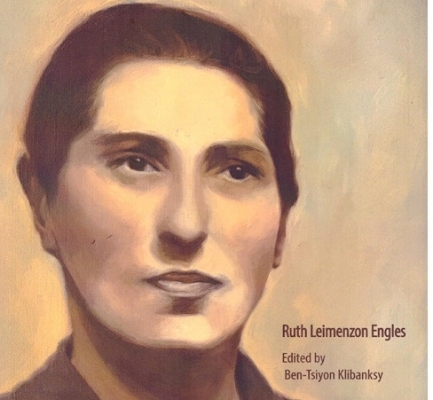Written in a Barn – The Diary of a Young Woman from Vilna
Written in a Barn – The Diary of a Young Woman from Vilna
Ruth Leimenzon Engles (edited by Ben-Tziyon Klibanksy)
Yad Vashem Publications, 2024
Hardcover, 168 pages
$22.37 from Yad Vashem Publications (store.yadvashem.org)
Reviewed by Shlomo Liberman
Yad Vashem does not publish books from second-and third-generation authors about the Holocaust anymore, since there are so many. But there is a lack of new first witness accounts, especially diaries. A rare opportunity came up, when David Engles, the son of Ruth Leimenzon (later Engles), decided to translate the book his mother had written in Yiddish and which was published by The Ghetto Fighters' House (Lohamei HaGettaot) in 1973.
A few days after the Germans occupied Vilna in the summer of 1941, Ruth's husband was seized by local collaborators and was never seen again. Ruth, the only survivor of her family, managed to survive two years in the ghetto by using common sense, luck, and perhaps miracles. Two days before the liquidation of the ghetto in September 1943, Ruth escaped with the help of a Christian woman, her former boss's wife, and found a hiding place in a barn on a farm 20 kilometers outside of Vilna. She hid there for nearly a year.
During the last two months in the barn, she wrote a diary, describing her three-year ordeal. It is an extraordinary document, since she did not know if she would survive. She bares her soul and divulges her innermost thoughts and feelings about everything that had happened to her.
After the liberation, Ruth made her way back to Vilna and was rejoiced to meet Lazar Engelstern, the longtime friend of her late husband. They married, had a son, David (the translator of the diary) and moved to the US in 1949 to start a new life and Americanized the family name to Engles. However, Ruth was marked by the harsh conditions during the war and perished in 1955 after a long illness at the age of 45.
Ruth had an amazingly positive attitude despite the dire circumstances. The following excerpt from the diary, cited by her son David in the foreword, is illustrative:
My desires are not all very great. I want only to have a tranquil life, without aggravation. I cannot imagine what that will look like. But it does happen that the impossible become possible. Who could have ever imagined that it to be possible that in one day, not even 24 hours, all of Vilna's Jews could be confined in one little corner? And then that in the course of two years, Vilna would be completely "liberated" of such a dense, well-established Jewish population that had been there for hundreds of years?
The English translation has additional chapters which help understand the context. David wrote a moving introduction called "My Mother's Legacy" about his reasons for translating the diary. The editor, Ben-Tziyon Klibanksy, provides a historical preface chapter with pertinent historical context, and finally Yisrael Rudnitzky's foreword to the Yiddish edition is also included.
Highly recommended!
Historical Chronology of the Events in Vilna:
- Absence of Government: June 22–23, 1941
- Temporary Governments: June 24–August 1, 1941
- German Civil Administration: August 2–September 5, 1941
- Existence of Two Ghettos: September 6–October 21, 1941
- Aktionen in Ghetto 1: October 22–December 23, 1941
- Stability in the Ghetto: December 24–August 5, 1943
- Deportations to Estonia: August 6–September 4, 1943
- Liquidation of the Ghetto: September 5–24, 1943









Comments